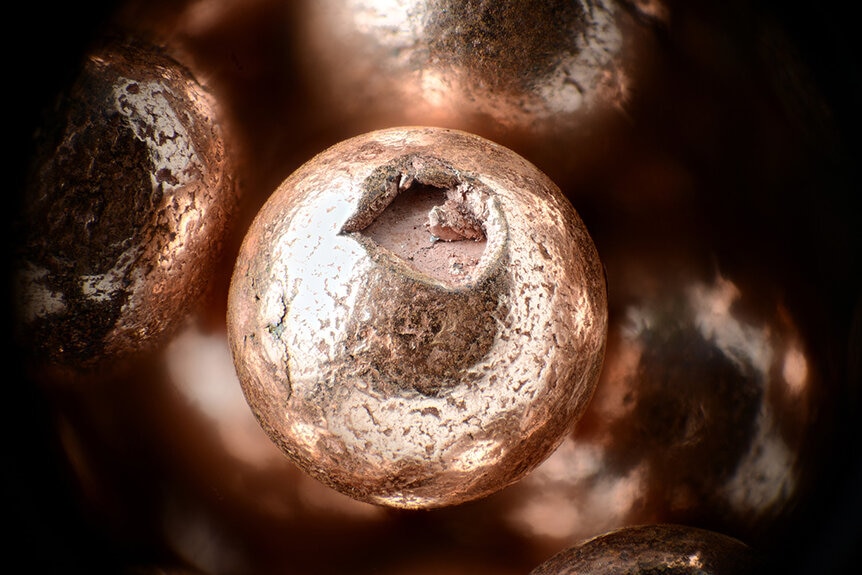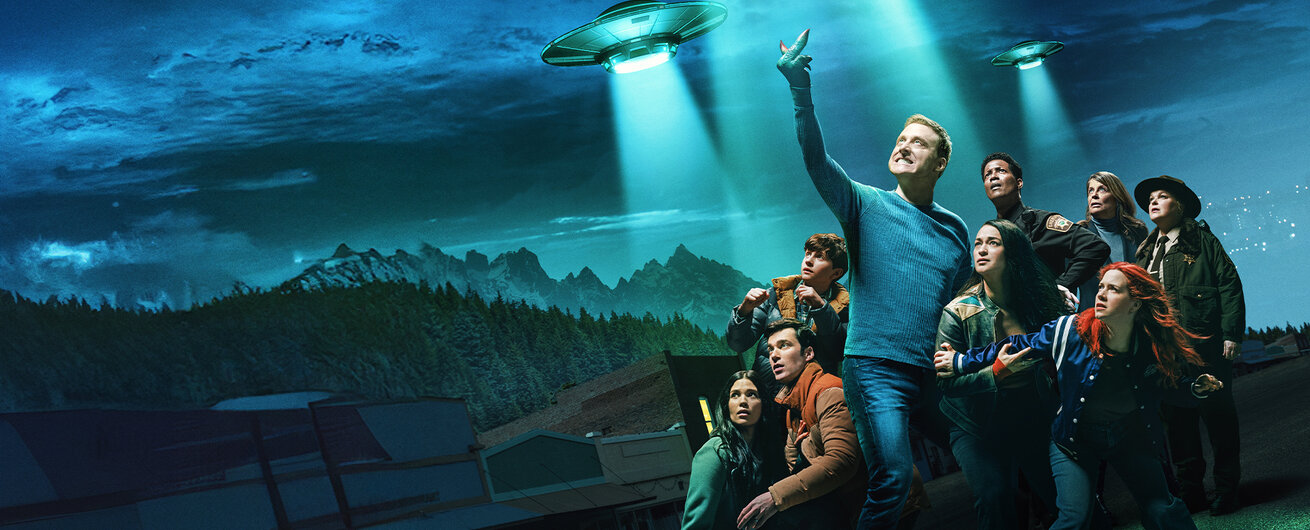Create a free profile to get unlimited access to exclusive videos, sweepstakes, and more!
Scientists Figured Out the Truth About Those Underwater "Alien" Spherules
Alien gadgets or human garbage?
The alien known as Harry Vanderspeigle first arrived in Earth’s atmosphere with a simple mission. He was supposed to deliver a machine designed to destroy humanity (but not the planet or any other life on it) when his ship was struck by a bolt of lightning. It came crashing down in the fictional town of Patience, Colorado and Harry (real name unpronounceable) became the titular Resident Alien.
Despite coming down on land in a relatively controlled scenario, Harry spends months looking for the pieces of his ship and the lost humanity-destroying gadget. In the real world, Harvard astronomer Avi Loeb undertook an even more difficult recovery mission when he led an expedition searching for fragments of a downed alien spacecraft at the bottom of the Pacific Ocean.
RELATE: Harvard Astronomer Hunting for UFOs on the Ocean Floor May Have Found… Something
Loeb previously claimed that the object CNEOS 20140108, an impactor detected on January 8, 2014, was actually an interstellar object which impacted the planet. That claim, in and of itself, isn’t terribly extraordinary. We know that interstellar objects do visit our solar system from time to time, but what Loeb claimed next would require incredible evidence to support. Loeb claimed that the object was not only interstellar, but was likely a piece of alien technology. Now, independent analysis of the metal spherules Loeb recovered suggests they are ordinary terrestrial trash.
There Are Tiny Metal Spheres All Over the Ocean and Some of Them Come from Space
In order for Loeb’s extraordinary alien claim to hold up, a few other things first needed to be true. CNEOS 20140108 must actually have been interstellar, something which isn’t universally accepted. Fragments of it had to survive entry into the atmosphere and contact with the ocean, and have been recovered. Those fragments had to have a composition indicating non-terrestrial origin. And they had to have signs of being artificial, not simply interstellar but natural.
Even if we assume that CNEOS 20140108 was interstellar, there’s little reason to think Loeb recovered any of it. At the speed and angle it came in, most scientists agree it would have been totally vaporized. If any of it survived, we’d be talking about tiny fragments of an object moving at high speed during a necessarily destructive process and being scattered over a large swatch of the ocean. Hoping to find it, Loeb and company identified the suspected impact path and dragged a magnetic sled across the seafloor along that path.
RELATED: Harvard astrophysicist Avi Loeb's new book insists 'Oumuamua was alien tech
Certainly, Loeb and team found something on the ocean floor, approximately 50 metal spherules ranging in size from a few microns to a few millimeters. The question is where those spherules came from before they settled down into Davy Jones’ locker. The thing is, spherules are actually incredibly common and are found in practically every ocean floor expedition.
Without a doubt, some of those spherules come from space, the leftover bits of impactors just as Loeb suggests, but that’s far from the only source. Some of them undoubtedly come from burnt up human spacecraft, downed airplanes, sunk ships, and miscellaneous pollution. It’s way more likely that Loeb’s spherules come from a mixture of those terrestrial sources.
Avi Loeb's Spherules Do Show Signs of Technology... Just Not Alien
To find out where they come from, we have to figure out what they’re made of. In our solar system, all of the stuff evolved out of the same cloud of primordial gas and dust. For the most part, objects which originate in our solar system have a signature. Moreover, we can tell the difference between rocks which came together on Earth (or another planet) and rocks that came together in space because of their compositions.
For instance, iron-rich meteorites of the type that would leave iron spherules behind, are all made of an iron-nickel alloy commonly called meteoric iron. Loeb’s spherules show a high proportion of iron, approximately 84%, and negligible nickel content. The measured nickel was so little that it didn’t even earn a solo mention, instead being grouped with other trace elements. One interpretation of their composition, of course, is that they come from an artificial source.
RELATED: ‘Oumuamua’s Weird Motion Has an Explanation, And It Isn’t Aliens
If you assume that Loeb is correct up to this point, that the object was extraterrestrial, that it landed where he thinks it did, and that his spherules are recovered pieces of that object, then the composition seems to support the extraterrestrial technology hypothesis. But that disregards a much simpler and more likely explanation. Namely, that the spherules do have an artificial origin: Us.
Loeb noted the presence of beryllium, lanthanum, and uranium in some of the spherules and some have interpreted that as evidence that the aliens have nuclear technology. An independent analysis, however, finds that the proportions from Loeb’s allegedly alien spherules are consistent with byproducts from our own terrestrial energy production. The ash leftover from the burning of coal creates these elements as well as low levels of nickel consistent with the makeup of Loeb’s spherules.
Maybe CNEOS 20140108 was interstellar. Maybe some of it survived the impact. Maybe Loeb found evidence of an intelligent, technological species. But to suggest that all of those things are true and that all of them are related, strains the available evidence to its breaking point. After all, if aliens can’t find their own spacecraft, how can we be expected to find it?
Catch the first two seasons of SYFY’s Resident Alien streaming now on Peacock.
























